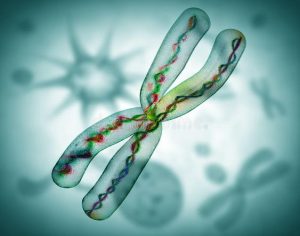In a world where even a simple infection poses a life-threatening risk, and a minor wound could lead to catastrophe, the effective treatment of diseases has become an increasingly challenging task for doctors. This is not a scenario from a science fiction movie but a real and pressing issue.
For decades, antibiotics have been crucial in combating various bacterial infections. However, the overuse of these drugs has led to the development of antibiotic-resistant bacteria, commonly known as “superbugs.”

Scientists are in a race against time to discover new antibiotics capable of defeating these resilient bacteria. Despite the daunting task, the recent discovery of the antibiotic Chloramphenicol has reignited hope that we can overcome the antibiotic resistance crisis.
Is Chloramphenicol the long-awaited savior, or is it just another antibiotic in a long series, useful only in research? The results so far are mixed.
The primary function of antibiotics is to either directly kill bacteria or inhibit their growth and division by targeting parts of bacterial cells that do not exist in human cells.
Imagine the bacterial cell wall as fortress walls aiding the bacteria’s survival. Antibiotics act like a group of knights attempting to breach the walls and defeat the enemies inside. Traditional antibiotics weaken these walls, making it easier for our immune system to complete the task of killing bacteria.
However, bacteria have evolved to resist these attacks, rendering antibiotics ineffective in some cases. This is where Chloramphenicol comes in.
Chloramphenicol operates differently, targeting bacteria from the inside out by removing the building blocks used to construct the walls. Since bacteria have limited choices in selecting these building blocks, this approach reduces the likelihood of developing resistance.
This unique mechanism offers hope that Chloramphenicol could serve as a model for developing other antibiotics that work in a similar way. Yet, the future is not without significant challenges.

Why have most antibiotics failed?
The field of antibiotic discovery is filled with drugs that never progressed beyond the early stages of research.
Unforeseen complications, such as seemingly safe antibiotics in animals proving toxic at higher doses required for human treatment, contribute to this phenomenon. This unpredictability in the development stage is one reason over 98.5% of newly discovered antibiotics never leave the lab.
Even for Chloramphenicol, early signs are promising. It shows no toxicity in human cells and successfully cured mice infected with Staphylococcus aureus. However, risks persist, and market forces could work against Chloramphenicol.
Pharmaceutical companies seek a return on investment, and antibiotics must kill as many different bacteria as possible to be profitable. Health organizations compile lists of bacteria that pose the greatest threat to humans and have limited treatment options. While Chloramphenicol can kill some drug-resistant bacteria on these lists, it is ineffective against the most troublesome and destructive ones.
These drawbacks may hinder Chloramphenicol from obtaining future approval from the U.S. Food and Drug Administration (FDA). Scientists might overcome these issues by chemically “tuning” Chloramphenicol to possess the desired traits.
Even if effective, we still need other antibiotics.
While Chloramphenicol provides hope, relying solely on a new compound cannot resolve the current antibiotic resistance crisis. In fact, among the 64 antibiotics currently in clinical trials, over one-third target infections urgently requiring new therapies, including those caused by difficult-to-treat Clostridium difficile and tuberculosis.
As we eagerly await the day when new antibiotics become standard in our medical arsenal, maintaining good hygiene practices and adhering to prescribed antibiotic treatment plans remain crucial for individuals. Continued support for research combating antibiotic resistance is essential, not only from governments and non-profit organizations but also through policies incentivizing private sector investments.
By doing so, we can prolong the effectiveness of these valuable weapons against bacterial infections for as long as possible.
